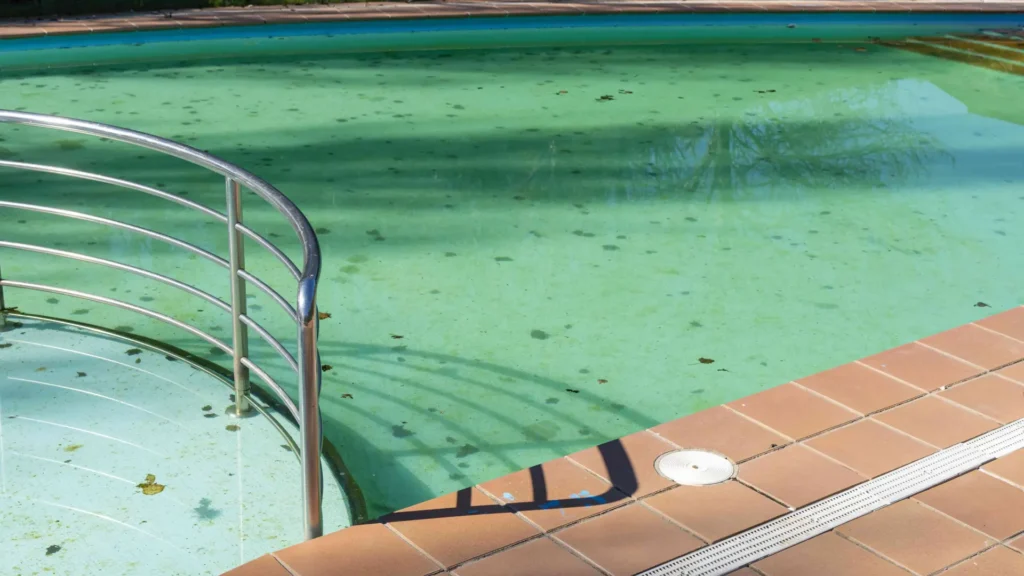Maintaining a pool can be challenging, but with the right knowledge, you can troubleshoot common pool maintenance problems like a seasoned pro. Here’s a guide to help you address some of the most frequent issues pool owners face.
Cloudy Pool Water
Cloudy pool water is a common problem that can result from poor filtration, imbalanced chemicals, or environmental contaminants. Start by checking and cleaning your pool filter to ensure it’s working efficiently. Test the water’s chemical balance, focusing on pH, alkalinity, and chlorine levels. Adjust these chemicals as needed to restore clarity. Additionally, consider shocking the pool to eliminate any organic contaminants that may be causing the cloudiness. Regularly skimming and vacuuming the pool also helps maintain clear water.
Algae Growth
Algae can quickly turn your pool green and unsightly. The first step in tackling algae is to brush the walls and floor of the pool to loosen the algae. Next, test the water and adjust the pH to around 7.2-7.4. Shock the pool with a high dose of chlorine to kill the algae. Use an algaecide for stubborn algae blooms. Run your pool filter continuously until the water clears up, and backwash or clean the filter frequently to remove dead algae. Prevent future growth by maintaining proper chlorine levels and running the filter for an adequate amount of time each day.
Low Water Pressure
Low water pressure can hinder the effectiveness of your pool’s filtration system. Begin by checking for any obstructions in the skimmer and pump baskets, removing any debris found. Inspect the filter for clogs or the need for a backwash. If your pool maintenance has a cartridge filter, it may need a thorough cleaning or replacement. Additionally, examine the pump impeller for blockages. Regular maintenance of these components ensures optimal water pressure and effective filtration.
Heater Not Working
A malfunctioning pool heater can be frustrating, especially during cooler months. Start by checking the thermostat settings to ensure they are correct. Inspect the power supply and ensure the heater is receiving electricity. If the heater is gas-powered, verify that the gas supply is turned on and that there are no obstructions in the gas line. Clean the heater’s filter and remove any debris that might be obstructing the burner. If these steps don’t resolve the issue, it may be necessary to consult a professional for a more in-depth diagnosis.
High Chlorine Demand
If your pool requires an unusually high amount of chlorine to maintain proper levels, there may be an underlying issue. Test for high levels of contaminants like ammonia or nitrogen, which can bind with chlorine and render it ineffective. Shock the pool with a high dose of chlorine to break down these contaminants. Ensure your pool’s stabilizer (cyanuric acid) levels are within the recommended range, as low levels can cause rapid chlorine degradation. Regularly monitor and adjust chemical levels to maintain a balanced and healthy pool environment.
Troubleshooting common pool maintenance problems involves addressing issues like cloudy water, algae growth, low water pressure, heater malfunctions, and high chlorine demand. With these tips, you can maintain your pool like a seasoned pro, ensuring a clean and enjoyable swimming environment.
Learn more:
The Importance of Regular Pool Filter and Pump Maintenance for Clear, Healthy Water

